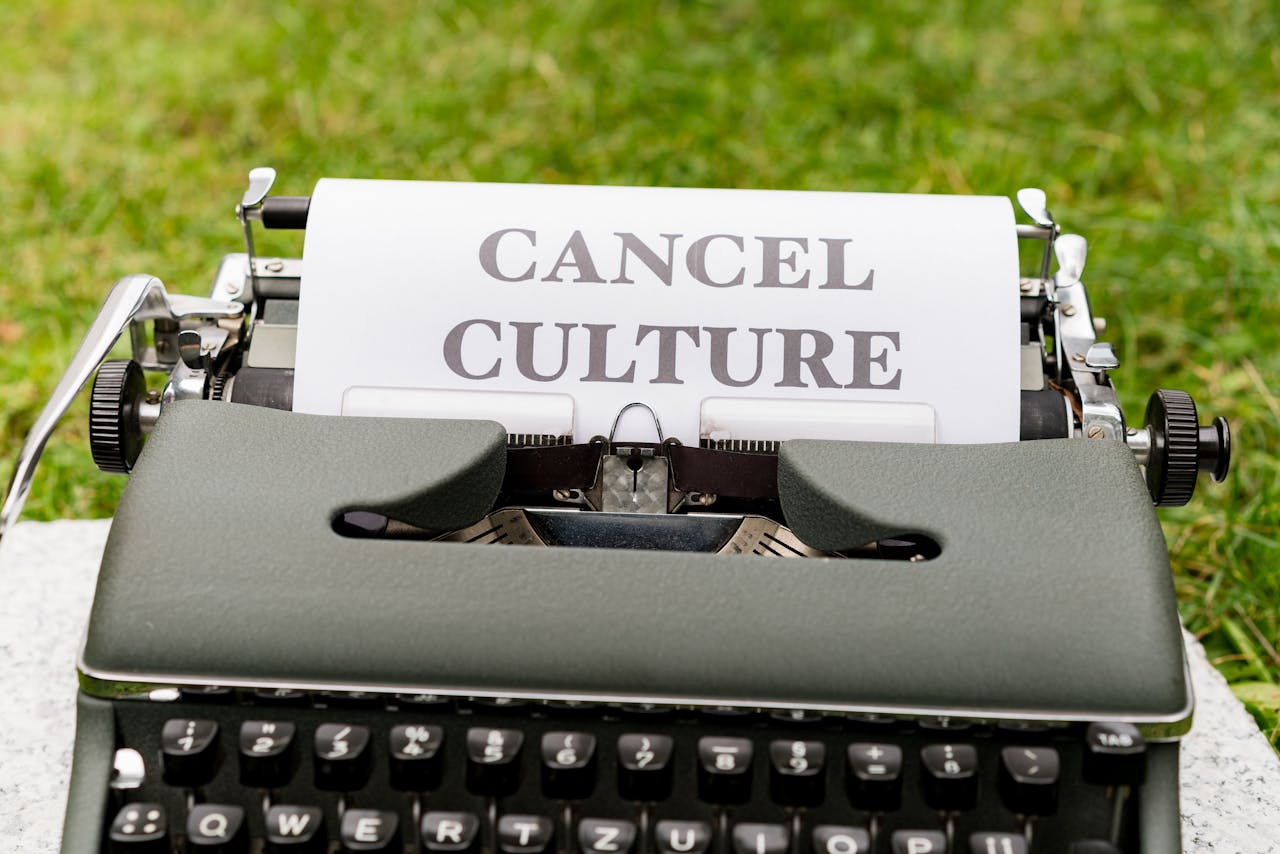It seems like every week someone new is getting “canceled.” A celebrity says something offensive, an old tweet resurfaces, or a scandal breaks—and boom, the internet erupts in outrage. Brands drop endorsements, social media goes into attack mode, and hashtags trend worldwide. But here’s the thing: a few months (or even weeks) later, that same person is often back—posting again, walking red carpets, or even getting applause for their “growth.” Welcome to the strange world where cancel culture meets comeback culture.
What Is Cancel Culture?
Cancel culture started as a form of social accountability. People—especially those in positions of power or fame—were being held responsible for harmful behaviour, often in ways traditional institutions wouldn’t touch. It gave a voice to marginalized groups and forced a long-overdue reckoning in industries like Hollywood, politics, and music. But over time, “canceling” someone became less about meaningful change and more about public spectacle. It’s not always clear what the goal is anymore: punishment, education, or just online drama.
Why Comebacks Keep Happening
Despite all the outrage, most canceled figures don’t stay gone for long. Whether it’s through a carefully crafted apology video, a rebranding moment, or just waiting until the internet finds a new target, people bounce back. Some even come back bigger than before. Think about influencers, comedians, or even major actors who’ve made full recoveries after serious controversies. In part, this happens because our collective memory is short—and social media moves fast. Once the heat dies down, there’s space for redemption, especially if there’s still money to be made.

The Role of Fans and Followers
A huge factor in this cycle is the audience. For every group that calls for cancellation, there’s often another group defending the person or demanding their return. Fan loyalty is real—and sometimes intense. The same platforms used to cancel someone can also be used to support them, creating a tug-of-war between criticism and comeback. At some point, curiosity wins out. People start checking in to see what the canceled person is doing now, and just like that, the algorithm puts them right back on our feeds.
Are We Too Quick to Judge—or Too Quick to Forgive?
The cancel vs. comeback cycle raises a lot of questions. Are we canceling people for serious harm or simple mistakes? Are apologies enough? And who decides when someone deserves a second chance? There’s a big difference between someone growing from a misstep and someone dodging real accountability. But the line is blurry. As a culture, we’re still figuring out what forgiveness looks like, especially in the public eye. Some comebacks feel genuine, while others feel like PR stunts.
The Business of Redemption
Let’s not forget that behind every canceled celebrity is a team of managers, publicists, and brand strategists who know exactly how to stage a return. There’s a blueprint for redemption now: disappear for a while, issue an apology (maybe even a Notes app screenshot), make a low-key appearance, and then ease back into the spotlight. If the audience is ready, the comeback is a go. And often, it works. Because let’s be honest—controversy sells, and comebacks are good for business. Cancel culture isn’t going anywhere—but neither is comeback culture. As a society, we’re still learning how to balance accountability with grace, and how to separate performative outrage from real justice. Some people deserve to be held accountable, and some comebacks feel premature or undeserved. But the reality is, in the internet age, no one stays canceled forever. Whether that’s a sign of forgiveness or forgetfulness is still up for debate. Either way, the cycle continues—and we’re all watching.…
Read More



 Finally, Cannabis can also be used to improve sleep. The compounds in Cannabis can help to relax the mind and body, making it easier to fall asleep and stay asleep. This is an excellent option for insomnia or other sleep disorders. If you are looking for a natural way to improve your sleep, Cannabis may be worth considering. Cannabis has also been shown to improve the quality of sleep, so you will wake up feeling rested and refreshed. Cannabis is a powerful medicinal plant that has been used for centuries to treat various conditions. In this blog post, we have discussed some of the top benefits of Cannabis for women.…
Finally, Cannabis can also be used to improve sleep. The compounds in Cannabis can help to relax the mind and body, making it easier to fall asleep and stay asleep. This is an excellent option for insomnia or other sleep disorders. If you are looking for a natural way to improve your sleep, Cannabis may be worth considering. Cannabis has also been shown to improve the quality of sleep, so you will wake up feeling rested and refreshed. Cannabis is a powerful medicinal plant that has been used for centuries to treat various conditions. In this blog post, we have discussed some of the top benefits of Cannabis for women.…
 Before we answer the question, “are diet pills worth the hype?” let’s first understand what
Before we answer the question, “are diet pills worth the hype?” let’s first understand what  If you have read some PhenQ testimonials, you know many people have lost weight by using PhenQ. It can help you lose those stubborn pounds, but it is not a magic pill. Some of the benefits associated with diet pills include helping to increase your metabolism, suppress your appetite, and giving you more energy. If you want to lose weight, diet pills can be a helpful tool, but they should not be the only thing you rely on. These are just a few benefits you may experience when taking diet pills. Of course, everyone is different, and you may not experience all of the benefits listed above.
If you have read some PhenQ testimonials, you know many people have lost weight by using PhenQ. It can help you lose those stubborn pounds, but it is not a magic pill. Some of the benefits associated with diet pills include helping to increase your metabolism, suppress your appetite, and giving you more energy. If you want to lose weight, diet pills can be a helpful tool, but they should not be the only thing you rely on. These are just a few benefits you may experience when taking diet pills. Of course, everyone is different, and you may not experience all of the benefits listed above. Unfortunately, diet pills often have a long list of risks and side effects. Some of the more common ones include high blood pressure, heart palpitations, stroke, and even death. The FDA has issued warnings about several popular diet pills in the past. So, are diet pills worth the risk? That’s a decision that you’ll have to make for yourself. However, it’s important to remember that safer and more effective alternatives are often available. Talk to your doctor about other options before taking any diet pills.…
Unfortunately, diet pills often have a long list of risks and side effects. Some of the more common ones include high blood pressure, heart palpitations, stroke, and even death. The FDA has issued warnings about several popular diet pills in the past. So, are diet pills worth the risk? That’s a decision that you’ll have to make for yourself. However, it’s important to remember that safer and more effective alternatives are often available. Talk to your doctor about other options before taking any diet pills.…
 One of the most important things you can do for your financial health is to create a plan for your future. This doesn’t have to be a complicated document, but it should outline your short-term and long-term goals. Once you have a plan, you can start working on specific strategies to help you reach your goals. For example, if you want to save for a down payment on a house, you’ll need to create a budget and make sure you’re automatically transferring a fixed amount of money into your savings account each month.
One of the most important things you can do for your financial health is to create a plan for your future. This doesn’t have to be a complicated document, but it should outline your short-term and long-term goals. Once you have a plan, you can start working on specific strategies to help you reach your goals. For example, if you want to save for a down payment on a house, you’ll need to create a budget and make sure you’re automatically transferring a fixed amount of money into your savings account each month. Lastly, one of the most important things you can do for your personal finances is to create an emergency fund. This is a savings account that you only use for an unexpected expenses, such as a job loss, medical emergency, or car repair. Having an emergency fund can help you avoid going into debt if something unexpected comes up. Aim to save at least three to six months of living expenses from knowing you have a cushion to fall back on if needed. Personal finance doesn’t have to be complicated or overwhelming. By following these simple tips, you can take control of your finances and set yourself up for success.
Lastly, one of the most important things you can do for your personal finances is to create an emergency fund. This is a savings account that you only use for an unexpected expenses, such as a job loss, medical emergency, or car repair. Having an emergency fund can help you avoid going into debt if something unexpected comes up. Aim to save at least three to six months of living expenses from knowing you have a cushion to fall back on if needed. Personal finance doesn’t have to be complicated or overwhelming. By following these simple tips, you can take control of your finances and set yourself up for success.
 One of the most effective ways to keep animals out of your yard is to repel them with the smell. You can do this by using a variety of different products that are available on the market. One popular product is called “Moth Balls.” These balls release a strong scent that will deter animals from entering your yard. You can also use products like “Rabbit Repellent” to keep animals away. In addition, you can make your repellent by mixing equal parts of vinegar and water. You can spray this solution around the perimeter of your yard to keep animals out.
One of the most effective ways to keep animals out of your yard is to repel them with the smell. You can do this by using a variety of different products that are available on the market. One popular product is called “Moth Balls.” These balls release a strong scent that will deter animals from entering your yard. You can also use products like “Rabbit Repellent” to keep animals away. In addition, you can make your repellent by mixing equal parts of vinegar and water. You can spray this solution around the perimeter of your yard to keep animals out.

 Do not choose a course based on price alone. Many online traffic control courses charge $20 or less when in reality, these classes offer very little information and do not give you the tools needed to be successful as a traffic controller. It is crucial to invest in your future and make sure the class provides plenty of practice tests, videos, and other learning materials. Also, do not take all online material seriously because there is plenty of free content available but make sure it comes from an approved source.
Do not choose a course based on price alone. Many online traffic control courses charge $20 or less when in reality, these classes offer very little information and do not give you the tools needed to be successful as a traffic controller. It is crucial to invest in your future and make sure the class provides plenty of practice tests, videos, and other learning materials. Also, do not take all online material seriously because there is plenty of free content available but make sure it comes from an approved source.
